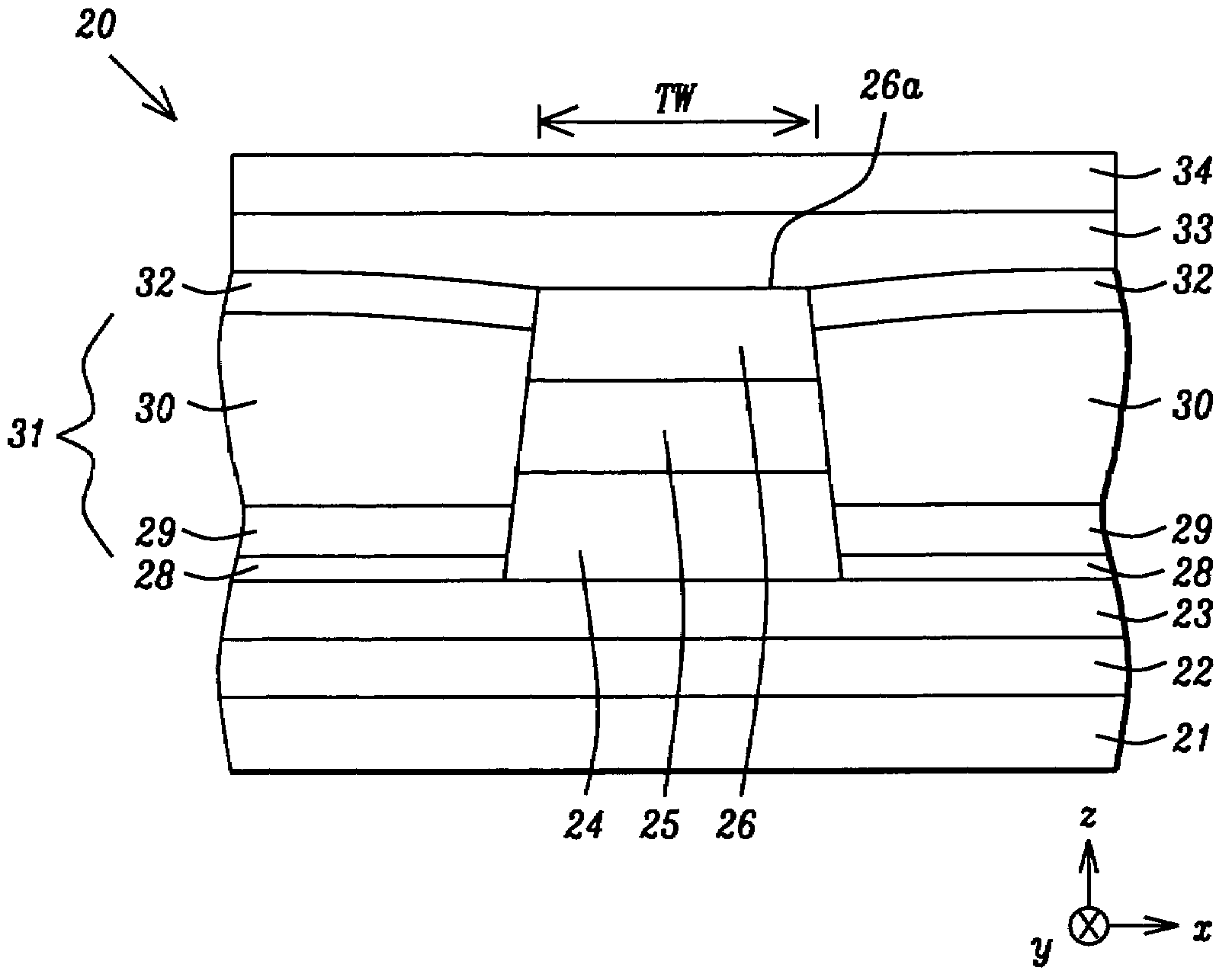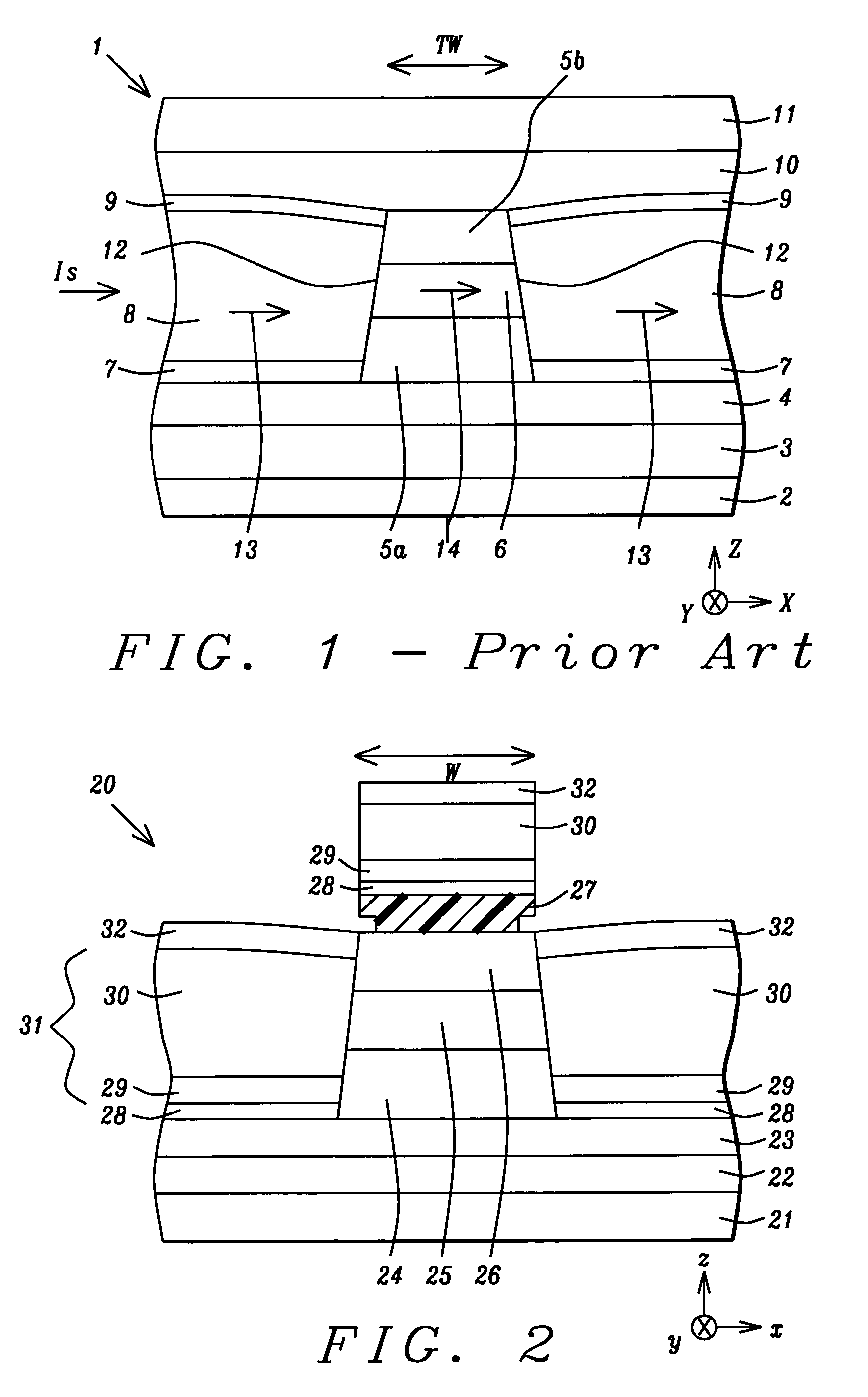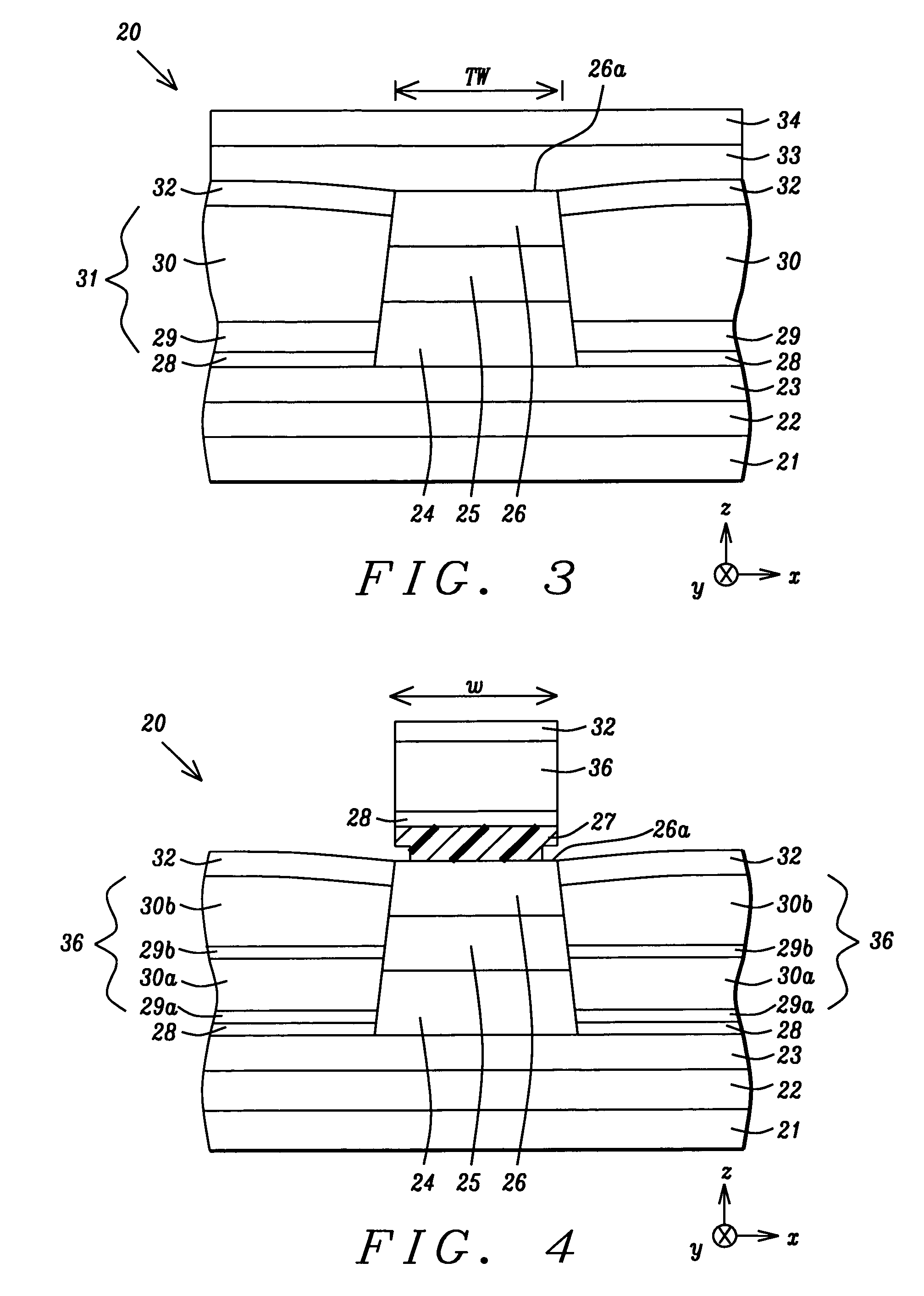Composite hard bias design with a soft magnetic underlayer for sensor applications
a soft magnetic underlayer and sensor technology, applied in nanoinformatics, instruments, record information storage, etc., can solve the problems of reducing the biasing strength and efficiency, undesirably high magnetostriction, and the method for fabricating this device appears to be complicated and expensive, so as to reduce the length of the biasing dispersion
- Summary
- Abstract
- Description
- Claims
- Application Information
AI Technical Summary
Benefits of technology
Problems solved by technology
Method used
Image
Examples
second embodiment
[0035]The present invention is an improved hard bias structure in a magnetic read head that reduces dispersions of biasing strength along a junction edge with a free layer in a magnetoresistive (MR) element. Although the exemplary embodiments depict a CIP spin valve for a GMR sensor device, those skilled in the art will appreciate that the present invention may also apply to CPP spin valves, magnetic tunnel junction (MTJ) devices, or to multilayer sensor designs based on a GMR or SVMR effect. The drawings are provided by way of example and are not intended to limit the scope of the invention. For example, the shape of a MR element in a magnetic device is not a limitation and the present invention encompasses any configuration where a hard bias structure as described in the first or second embodiment forms an abutting junction with a free layer in the MR element. Moreover, the MR element may be comprised of either a top spin valve or a bottom spin valve. The present invention is also...
first embodiment
[0036]A first embodiment is depicted in FIGS. 2-3. Referring to FIG. 2, a cross-sectional view from an ABS plane is shown of a partially completed magnetic read head 20 formed on a substrate 21 that may be a ceramic layer, for example. A first shield layer 22 is formed on the substrate 21 and a first gap layer 23 is formed on the first shield layer by a conventional method. There is a GMR sensor element which is a stack comprised of a bottom portion 24, a free layer 25, and a top portion 26 sequentially formed on the first gap layer 23. The GMR sensor element typically has sloped sidewalls wherein the top portion 26 has a smaller width than the bottom portion 24.
[0037]The GMR sensor element is fabricated by sequentially depositing a stack of layers that comprises a bottom portion 24, a free layer 25, and a top portion 26 by an argon sputtering technique, for example, which is well known in the art. A photoresist layer 27 having a width w is patterned on the top portion 26 and then a...
PUM
| Property | Measurement | Unit |
|---|---|---|
| coercivity | aaaaa | aaaaa |
| thickness | aaaaa | aaaaa |
| thickness | aaaaa | aaaaa |
Abstract
Description
Claims
Application Information
 Login to View More
Login to View More - R&D
- Intellectual Property
- Life Sciences
- Materials
- Tech Scout
- Unparalleled Data Quality
- Higher Quality Content
- 60% Fewer Hallucinations
Browse by: Latest US Patents, China's latest patents, Technical Efficacy Thesaurus, Application Domain, Technology Topic, Popular Technical Reports.
© 2025 PatSnap. All rights reserved.Legal|Privacy policy|Modern Slavery Act Transparency Statement|Sitemap|About US| Contact US: help@patsnap.com



